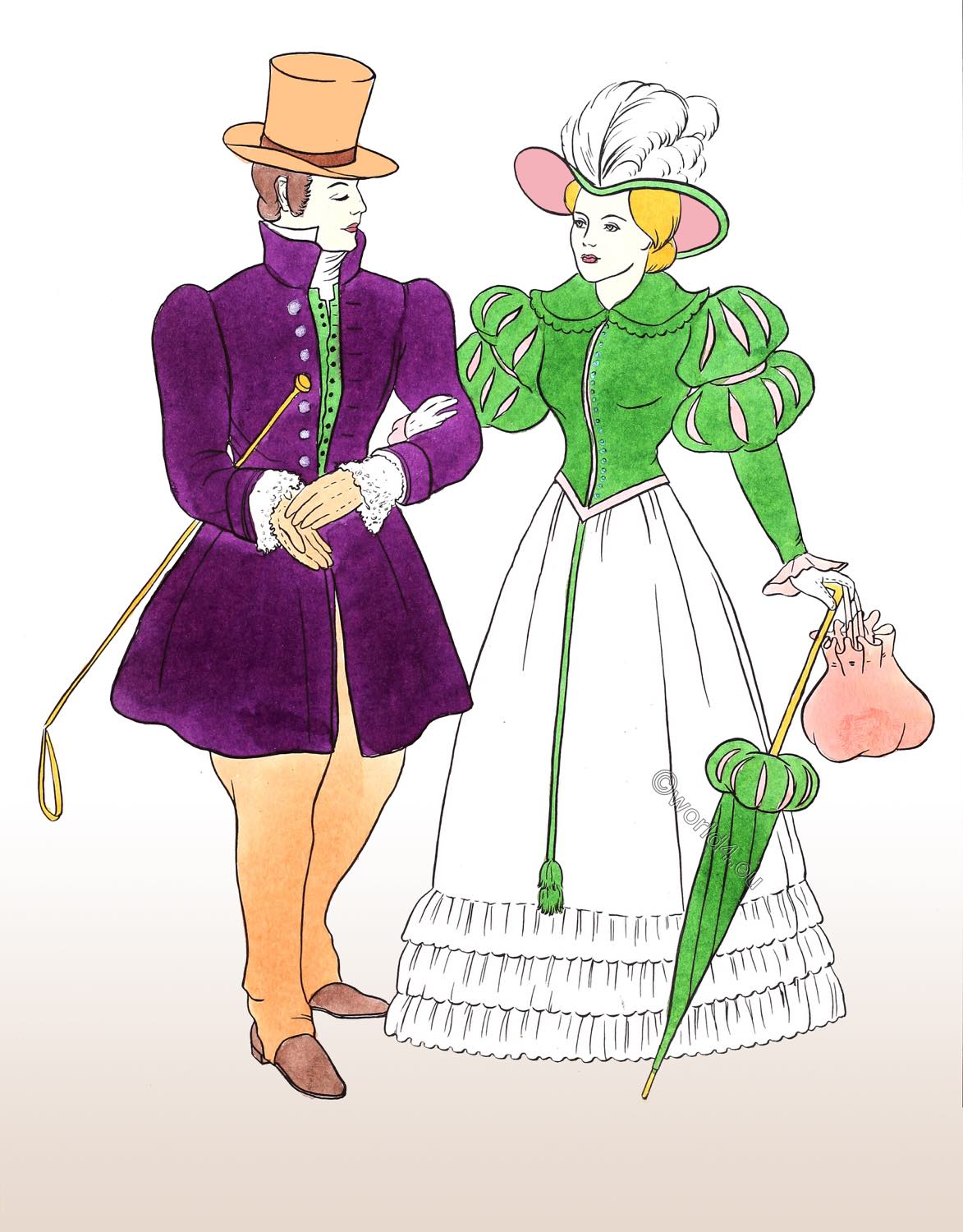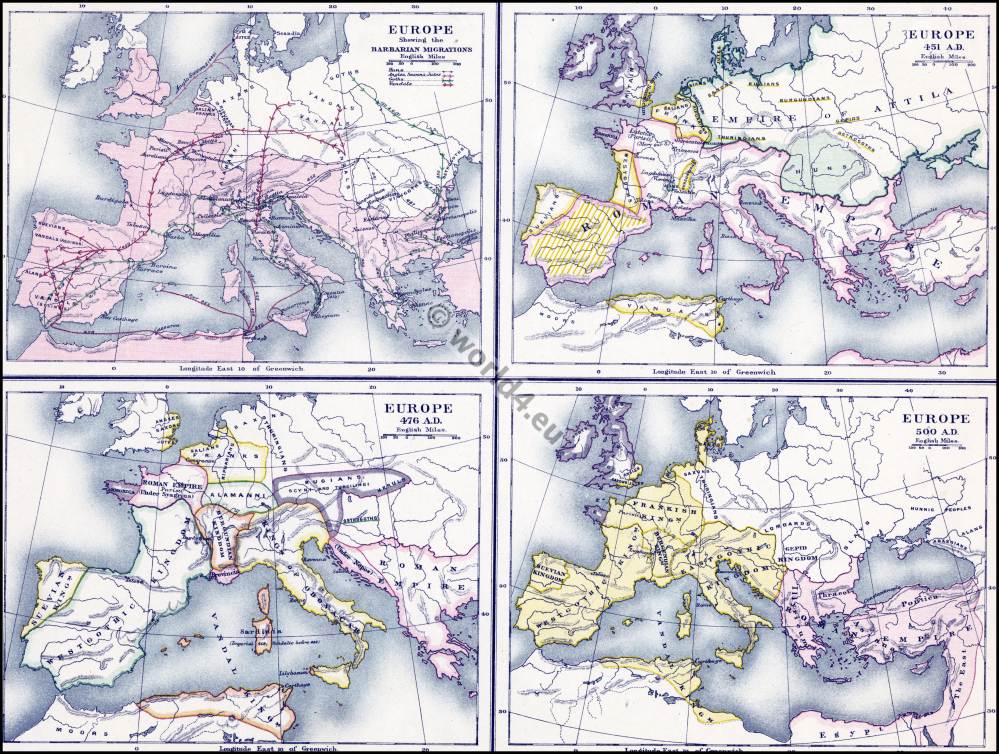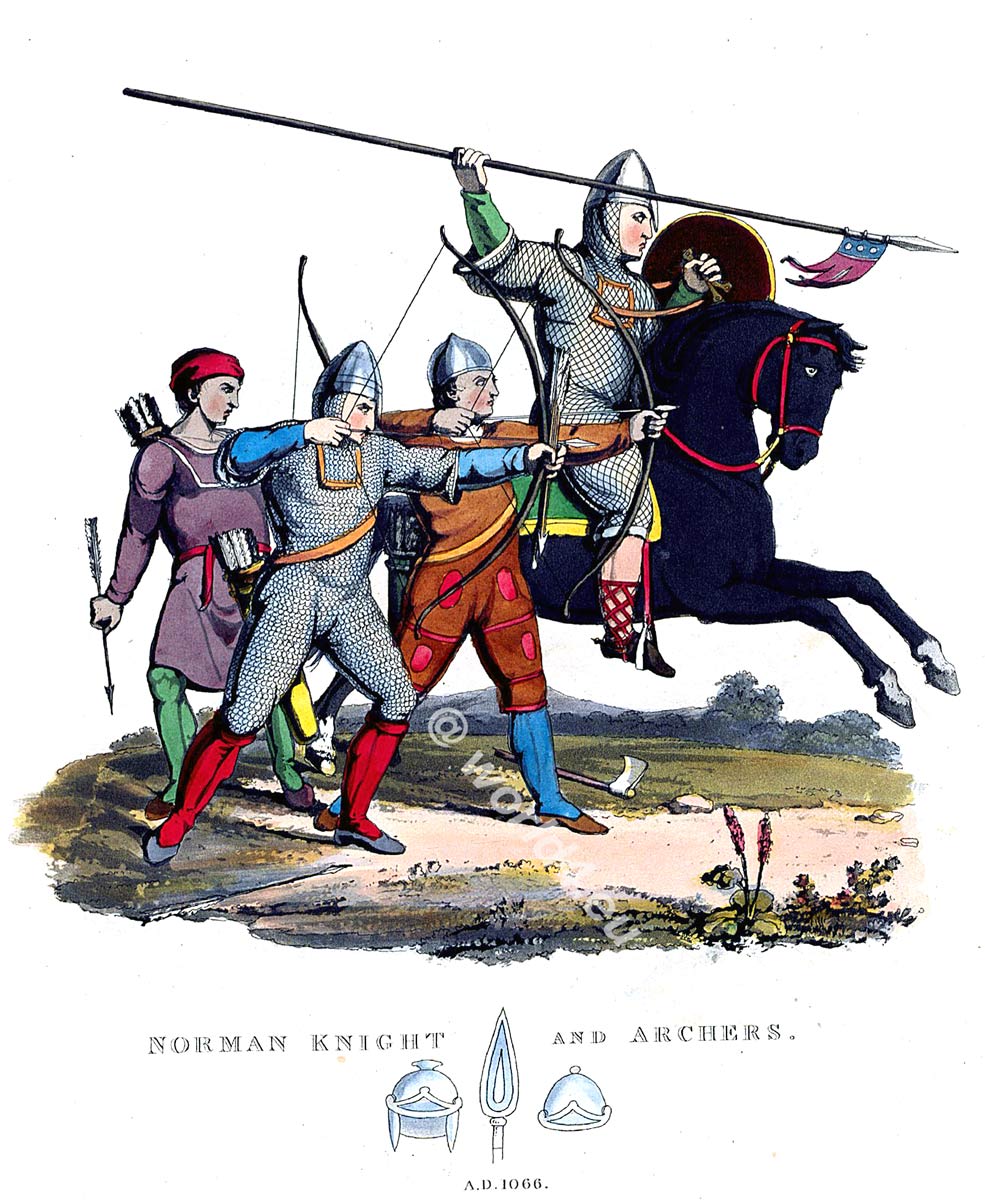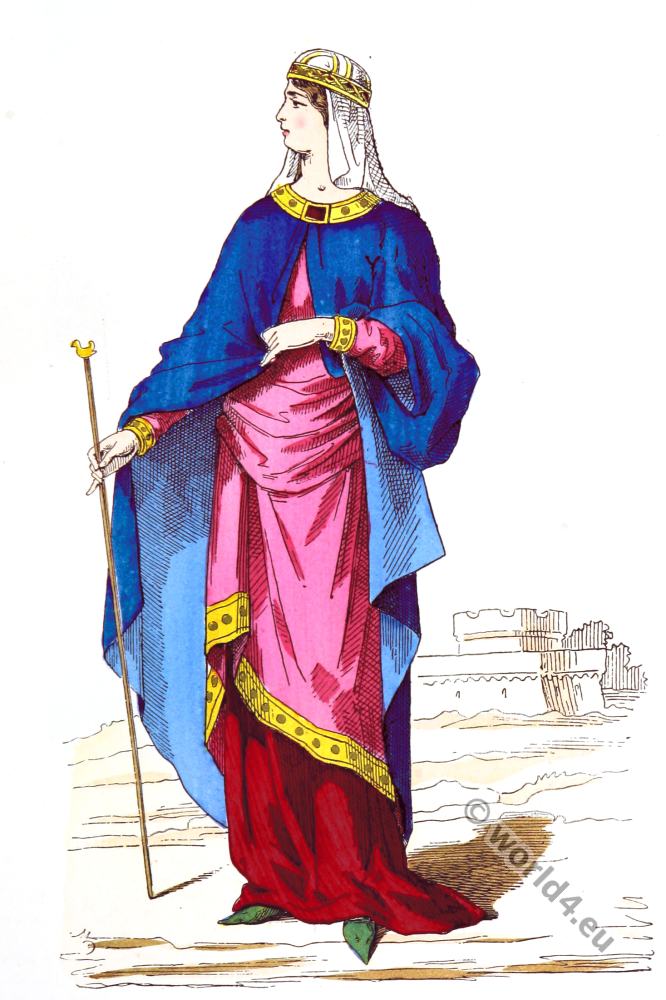THE NORMAN PERIOD, a.d. 1066—1154.
The conquest of England by the Normans, under the command of William the Conqueror, effected a most important change in the laws, manners, customs, and costume of the inhabitants. But the change in dress was not so great as might have been anticipated, because, as it has been remarked, the English had imitated the dress and manners of the Normans, instigated by the example of Edward the Confessor, whose tastes and sympathies were entirely Norman.
It is remarkable that the best authority we have for representatives of the costumes of the Norman invaders is the celebrated Bayeux tapestry, which is traditionally reported to have been worked by Matilda the wife of the Conqueror.
Archaeologists have declared that this piece of work is fully entitled to our confidence as a faithful representation of the armour, weapons, and habits of William and his followers. This tapestry is still preserved at Bayeux, in Normandy. It is 214 feet long and 20 inches broad, and is rudely worked in coloured worsteds like a sampler. The Society of Antiquaries, impressed with the historical value of this important historical production, despatched the late Mr. C. A. Stothard to Normandy, to copy it in the most accurate manner possible.

Those who are curious in this matter can see an exact representation of the Bayeux tapestry, which has been copied in full size by means of photography, and coloured in imitation of the original needlework. It will be found hung on the east wall of the Architectural Court at the South Kensington Museum. It will well repay the trouble of inspection, as it is a facsimile of a remarkable relic of the past.
It is a pictorial history of the Norman Conquest, commencing with Harold’s visit to Normandy at the instigation of Edward the Confessor, and pourtrays all the incidents of his stay at William’s court, his subsequent departure, the death of Edward and his funeral at Westminster, the coronation of Harold, William’s invasion, the battle of Hastings, and Harold’s death.
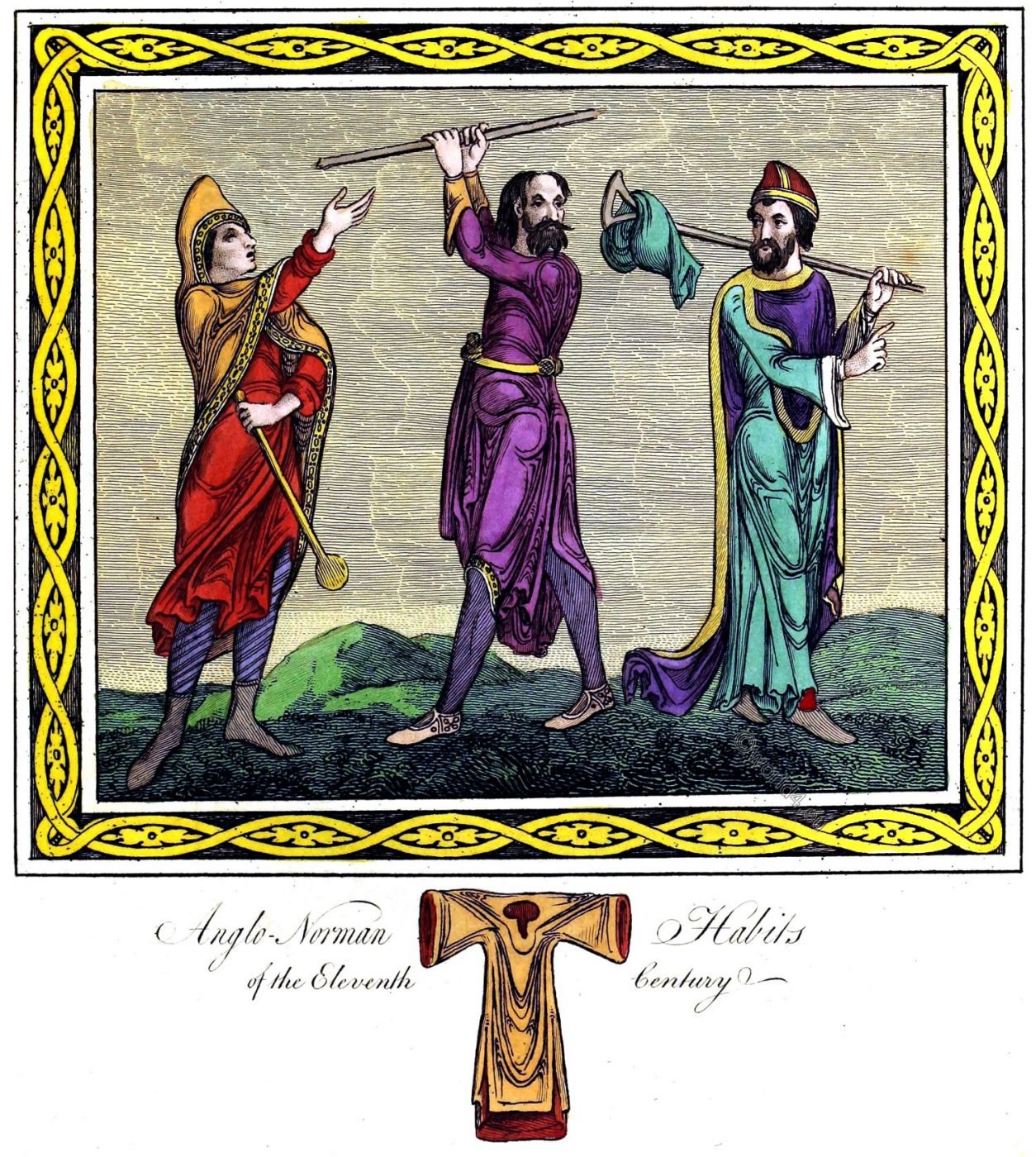
In speaking of costume during the reign of William the Conqueror, Fairholt says: “The ordinary costume of the people during this reign appears to have been as simple as that of the Anglo-Saxons. Short tunics, with a sort of cape or tippet about the neck, and drawers that covered the entire leg, known as chausses, were worn, sometimes bandaged round the leg with various colours, or crossed diagonally. Full trousers reaching to the knee are not uncommon, as may be seen in various instances, and one example occurs in the Bayeux tapestry, in which they end in a series of Vandykes or points of different colour to the trouser itself.
The tunic, too, was sometimes variegated in perpendicular stripes from the waist, where it was confined by a coloured girdle. Their mantles were fastened by brooches or pins of an ornamental character, either square or round, which, having been common for ages previous, remained in fashion centuries afterwards.”

The Normans and the Flemings who accompanied the Conqueror into England, and those who followed in great numbers after his establishment upon the throne, are said by our early historians to have been remarkable for their ostentation and love of finery. Personal decoration was their chief study, and new fashions were continually introduced by them.
The habits of the nobility were of course more influenced by fashion than those of the common people, and the reign of Rufus is stigmatised by the writers of the period for many shameful abuses and innovations. The king set the example, and the clergy and laity alike became infected with the love of costly and extravagant clothing. The tunic was made larger and fuller, and the sleeves particularly so. The long tunic worn on state occasions, and the interula or linen vestment worn beneath it, actually trailed upon the ground. The long tunic worn on state occasions, and the interula or linen vestment worn beneath it, actually trailed upon the ground. The length and breadth of the sleeves were sufficient to cover the whole hand.
The mantles were made of the finest cloth and lined with rich furs. The extravagancy of the taste of the period is best illustrated by the grotesque shape of the shoes which were then worn. The boots and shoes were made with such extremely peaked toes that they excited the wrath of the ecclesiastical authorities, who strictly prohibited” the adoption of them by the clergy.
The shoes called pigaciae had their points made like a scorpion’s tail, and a courtier named Robert stuffed his out with tow, and caused them to curl round like a ram’s horn; a fashion which took mightily among the nobles, and obtained for its originator the cognomen of Cornadu.
We glean some information respecting the dress of the poorer classes of the community of this period from a representation of a singular dream of Henry I., which is depicted in a manuscript of Florence of Worcester in Corpus Christi College, Oxford. It represents three husbandmen. They are each dressed in simple tunics, without girdles, with plain, close-fitting sleeves; the central figure has a mantle fastened by a plain brooch, leaving the right arm free, and one carrying a scythe wears a hat not unlike the felt hat now worn by agricultural labourers. The beards of two of these figures are ample.
Ascending higher in the social scale, we find an increase in the ornamental details of dress. We can see the ordinary costume of the middle classes, as worn during the reigns of William Rufus, Henry I.,, and Stephen, represented on two figures, the one designed as David and the other as Noah. The first is dressed in a long tunic, reaching nearly to the ankles; it is of a red colour, and has a white lining; the collar is gilt as well as the cuffs, which reach nearly to the elbow; it is bordered with a simple ornament, arid is open on the left side from the waist downward, a fashion common at this period. He has tight-fitting chausses and high boots, or perhaps the Saxon leg bandages.
The second figure, representing Noah, wears a hat similar to the Anglo-Saxon helmet in shape, a very long full red tunic, with hanging sleeves, over which is thrown a green mantle bordered with gold. His tunic also is open at the side, showing what appears to be a stocking reaching to the knee; his shoes are ornamented by diagonal lines, and complete what may be considered a sample of the ordinary costume of the age.
The travelling costume of the period is shown on two figures of disciples. One wears a large round hat, with a wide brim, which seems to have been the original of the pilgrim’s hat, and formed a distinguishing mark of their costume. His short green tunic is protected by a capacious mantle of skin, provided with a cowl or hood to draw over the head, which was frequently used in place of a hat. He wears white breeches ornamented with red cross stripes, which end at the ankle, where they are secured by a band or garter, the foot being covered by close shoes. His companion wears the common cap so frequently represented; he has an under tunic of white, and an upper one of red, and a white mantle bordered with gold; he also wears the same kind of breeches reaching to the ankle, but he has no shoes, which frequently appears to have been the case when persons went on a journey.
I cannot omit mentioning one fact which is interesting to us as tailors, and which dates its origin from the time of Henry I. the yard measure was then fixed at the length of the king’s arm. That important branch of our commerce, the woollen manufacture, was introduced about this time by some Flemings, who settled first on the Tweed, and afterwards at Haverfordwest, in Pembroke, and Worsted, in Norfolk.
The feudal system was paramount, the barons lived in their castles, which were built for strength and safety in boisterous time. Around the castle clustered the shops and houses of those who were employed by the baron. Smiths, carpenters, workers in leather, tailors, and other craftsmen, built their huts in close proximity to the castle for convenience and protection, and thus the castle often became the nucleus of a town.
While the Norman nobles were richly dressed, the Saxon serf was clad in untanned hide, with sandals of boar-skin, and leathern bandage rolled half-way up the leg, and wearing round his neck a collar of brass engraved with his master’s name. It would appear, according to Strutt, that the trousers, posterior to the Conquest, ceased to form a part of a gentleman’s dress, and were confined to the rustics and lower classes of the people.
The short tunic of the Normans was somewhat longer than that of the Saxons, and in the twelfth century it reached to the middle of the legs: at the same time it was also richly adorned with broad borders and collars superbly ornamented with embroideries of gold and of silver, to which where even added the embellishment of precious stones. It will be easily conceived that these remarks refer only to the garments of the nobility and personages of distinction. The tunics of the Norman rustics and slaves do not appear to have differed in the least from those of the Saxons.
The gown seems to have been very commonly worn towards the conclusion of the twelfth century: it bears great resemblance to the tunic, but it was much looser; and the sleeves, which were long and large, appear to have been contrived in such a manner that the arms might either be inserted in them or left at liberty. The official gown of the chief magistrate of the City of London is made much in the same manner to this day. The gowns of the succeeding centuries were made of various rich materials, and lined with furs; they then became marks of distinction, and it is abundantly evident that they were not common among the lower classes of the people.
Source:
- The history of English costumes by Edward B. Giles, 1887.
- A complete view of the dress and habits of the people of England by Joseph Strutt. London: H.G. Bohn, 1842.
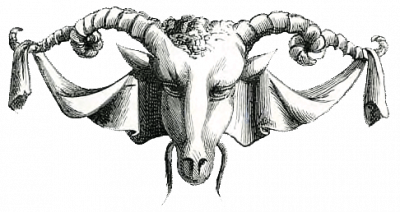
Discover more from World4 Costume Culture History
Subscribe to get the latest posts sent to your email.


